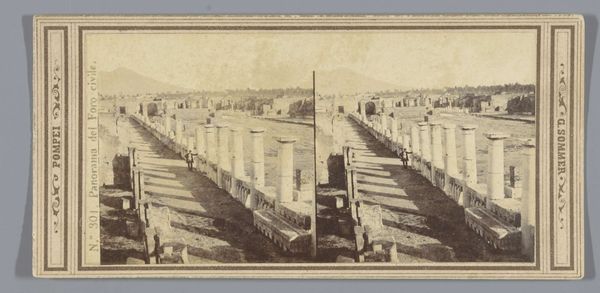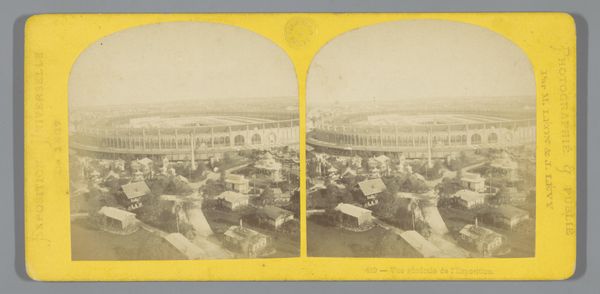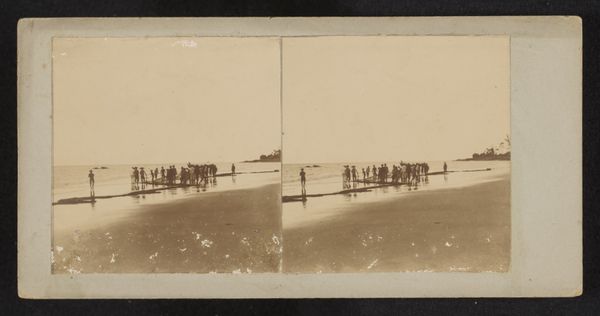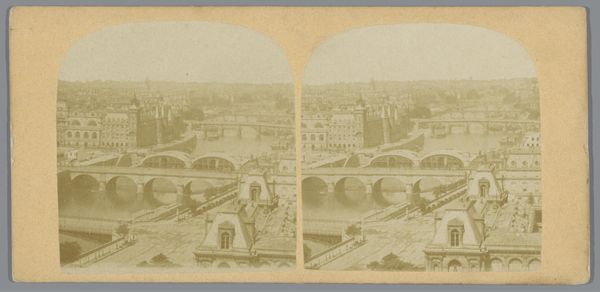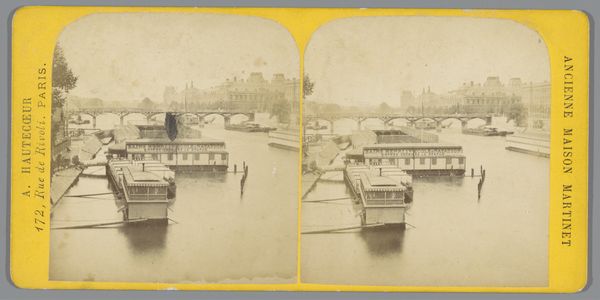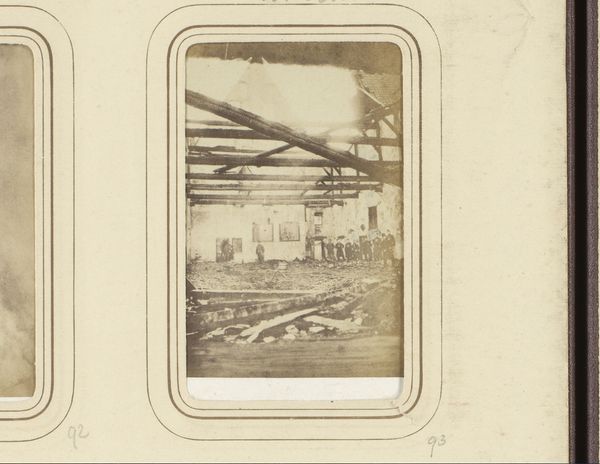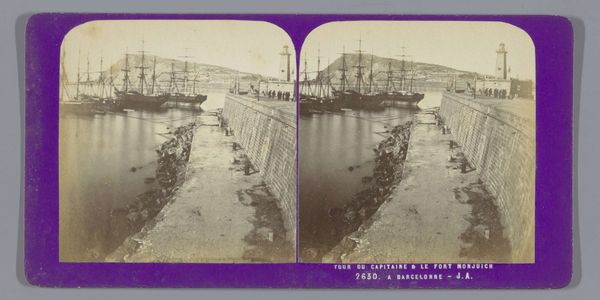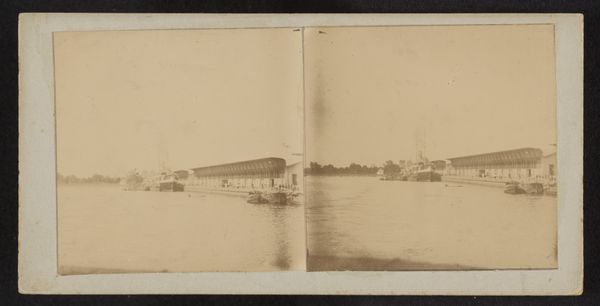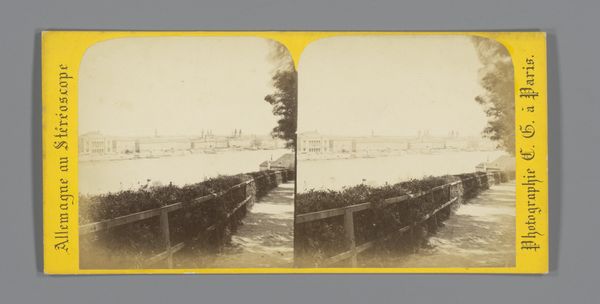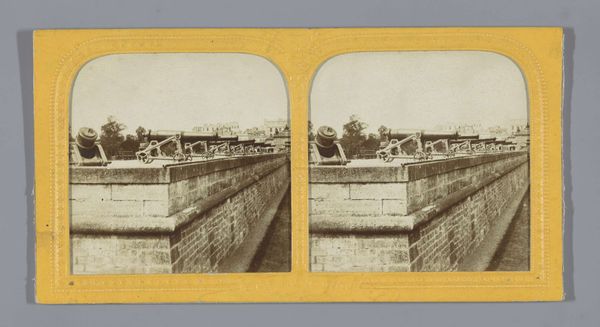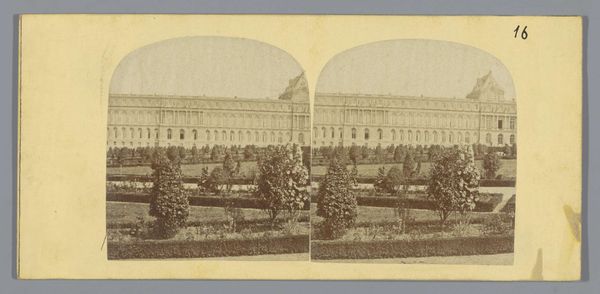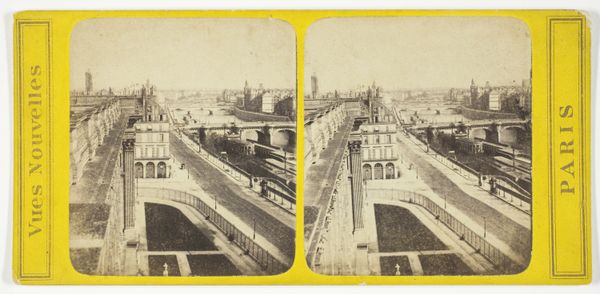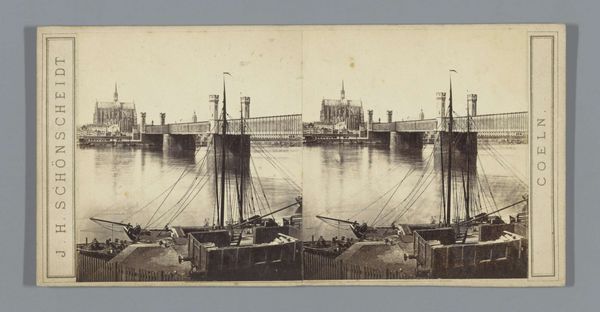
Gezicht op het Hôtel du Garde-Meuble en het Hôtel de Crillon aan het Place de la Concorde en La Madeleine in Parijs before 1868
0:00
0:00
Dimensions: height 85 mm, width 176 mm
Copyright: Rijks Museum: Open Domain
Curator: Before us, we have an intriguing print. It's a daguerreotype, or perhaps an early photographic print, titled "Gezicht op het Hôtel du Garde-Meuble en het Hôtel de Crillon aan het Place de la Concorde en La Madeleine in Parijs," dating to before 1868. The photographer remains anonymous. Editor: It has an ethereal, almost ghostly quality. The muted tones and somewhat soft focus create a dreamlike impression of Parisian grandeur. You sense a stillness, a pause in time. Curator: Precisely. As a daguerreotype or early print, its creation demanded a meticulous and lengthy process. Think about the socio-economic context: who could afford such a process in that era? How does this technology democratize or concentrate visual power? The laborious nature also imbued each image with value as both documentation and commodity. Editor: I see what you mean. Focusing on its composition, the scene is rigidly structured around a strong horizontal axis reinforced by the buildings and the bridge spanning what appears to be the Seine. This structured horizontality is then subtly disrupted by the verticals of the buildings. There's a clear semiotic message of power and order in these deliberate visual relationships. Curator: Absolutely. The architecture signifies authority, a direct reflection of the state's values, constructed and maintained through vast amounts of labor, both physical and intellectual. The photograph acts as an artifact, encapsulating the political ideals in physical form, circulating those ideologies among society through distribution. Editor: The muted palette seems particularly significant; a symphony of greys and sepias reinforces the sense of the past. Light itself is treated sculpturally, almost. There are stark contrasts—a deliberate highlighting of form through tonal variation. The materiality seems like a conduit towards communicating this past to the present, perhaps acting almost like an elegy to the era captured? Curator: In engaging with this visual echo from pre-1868 Paris, we are also engaging with its economic structures. It forces us to consider what role it played for those who had access to viewing, possessing, and commissioning these pieces, how labor influenced that economy, and to whom that privilege was accessible. Editor: Yes, thinking about light and form here has underscored the impact this moment from the past can have on how we view material objects, structures, and art. Curator: And I am compelled to see how images such as this perpetuated cultural beliefs via technology, as the laborious artistic method, too, is a language.
Comments
No comments
Be the first to comment and join the conversation on the ultimate creative platform.
